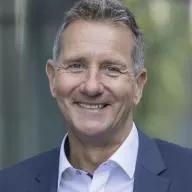
Aviation
4 minute read
Aviation needs to start cutting its emissions right now
Climate change is happening right now, and we cannot afford to delay action. In aviation, this means employing sustainable aviation fuels (SAF) to start cutting emissions.
As the industry has committed itself to net-zero emissions by 2050, there is a tendency to look further into the future and focus on lucrative future technologies that are expected to significantly contribute to the enormous task at hand.

Talking about reaching net-zero by 2050 might give the impression we can leave the toughest jobs for last, betting on technologies that have not been invented yet and future generations being able to stomach even more drastic change than we are facing now. We cannot, and should not, focus on future solutions alone. We must take full advantage of the solutions available already today while we continue developing solutions for the future.
We can do much more already today
We at Neste believe that we have to pursue a roadmap where we progress with existing production technologies whilst developing future approaches to enable additional SAF supply.
The primary stage involves using technology we already have available and that is scalable. With HEFA-based fuels available in the market, significant emission reductions are possible already today.
Use of SAF not only reduces the lifecycle GHG emissions immediately relative to conventional jet fuel, but it also helps to reduce the non-CO2-effects of aviation through reduced soot particle emissions. The European Union Aviation Safety Agency (EASA) has concluded1 that the non-CO2 impacts account for 66% of the total climate effects of aviation emissions.
Just by using waste and residue oils and fats as raw materials in the production of SAF, we can replace up to 10% of fossil jet fuels globally. This can be extended further by sourcing additional volumes of raw material as a result of crop cultivation on degraded land, or introducing cover crops to already existing farmland, hence minimizing land use change risk.
In the secondary stage, the raw materials can be expanded to include also municipal solid waste, agricultural residues and lignocellulosic raw materials that are turned into fuel through Fischer-Tropsch gasification, or alcohol-to-jet processes. These first two phases have the potential on their own of producing enough SAF to replace all fossil fuels in aviation. The second stage technologies will be commercialized in the next 5–10 years, with the first plants being developed right now.
The third stage will follow with large-scale Power-to-liquids fuels (PTL) or “eFuels” production. In PtL, atmospheric carbon is turned into fuels with renewable energy. By most estimates, it is expected to take 10 to 12 years to prove this technology and scale it up commercially. Access to large amounts of renewable power must also be secured at a competitive cost.
World Economic Forum’s Clean Skies for Tomorrow: Sustainable Aviation Fuels as a Pathway to Net-Zero Aviation report shows that, from a feedstock perspective, there is enough sustainable raw materials available to cover full global jet fuel use by 2030.
1) Updated analysis of the non-CO2 climate impacts of aviation and potential policy measures pursuant to the EU Emissions Trading System Directive Article 30(4), EASA, November 2020
Regulatory support needed to accelerate transition
As SAF production is more expensive than that of conventional jet fuel, regulatory mechanisms are needed to drive the demand. In other words, regulators need to help create a market for SAFs. Without regulatory support, the adoption of the more expensive SAFs will be sluggish at best, and aviation's share of all GHG emissions will continue to grow rapidly.
Norway has shown the way with its blending mandate last year. Sweden, France, and Finland will soon follow suit. We believe that by using current technologies efficiently and developing new solutions quickly, a blending mandate of 14% could be met at European level by 2030.
To achieve that and other climate goals, we need to act now. We as an industry, and Neste as one of the leading suppliers, are ready to invest to meet the challenge.
We should not, and cannot just wait: the climate change is here now.
Credits: Thorsten Lange, Executive Vice President, Renewable Aviation, Neste





